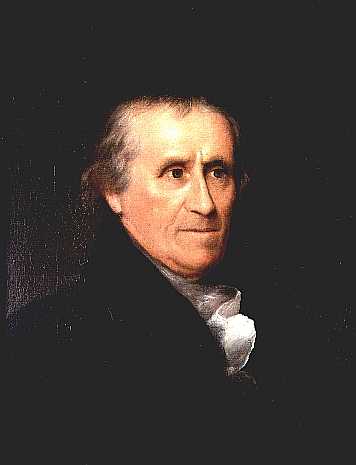<Back to Index>
- Physician Benjamin Waterhouse, 1754
- Painter Henry Raeburn, 1756
- Lord High Chancellor John Somers, 1651
PAGE SPONSOR

Benjamin Waterhouse (March 4, 1754, Newport, Rhode Island - October 2, 1846, Cambridge, Massachusetts) was a physician and professor at Harvard Medical School. He is most well known for being the first doctor to test the smallpox vaccine in the United States, which he carried out on his own family.
Waterhouse was born into a Quaker family, although he never adopted the religion as his own. His parents were Timothy Waterhouse, a chair maker who also served on the Governor's Council, and Hannah Waterhouse. His medical career began at age 16, when he apprenticed for a doctor in his hometown. At age 21, he left the United States to study medicine in Europe at several notable institutions, such as with Dr. John Fothergill in London, England. He was also educated in Edinburgh and Leyden, where he received his medical degree. While living in Holland, he roomed with future U.S. president John Adams.
After returning to the United States in 1782, Waterhouse joined the faculty of the new medical school at Harvard as one of three professors, including John Warren and Aaron Dexter, in the area of Theory and Practice of Physic. He was also elected that same year as a Fellow at Rhode Island College (now "Brown University"). In 1814, Waterhouse resigned his Harvard professorship after opposing a plan to establish the Medical School in Boston and attempting to found a rival medical school. He was a strong supporter of Samuel Thomson's medical system throughout the 1820s.
With the support of then-President Thomas Jefferson, Waterhouse introduced Edward Jenner's method of cowpox vaccination in the United States around the year 1800. He attempted to maintain a monopoly over the cowpox vaccine, for both financial reasons and to protect the vaccine from incompetent or fraudulent physicians. Waterhouse made the first vaccinations in the United States on four of his children. He commissioned a controlled experiment at the Boston Board of Health in which 19 vaccinated and 2 unvaccinated boys were exposed to the smallpox virus. The vaccinated boys demonstrated immunity and the 2 unvaccinated boys succumbed to the disease.
In 1788, he married Elizabeth Oliver, with whom he had six children. She died in childbirth in 1815. In 1819, he married Louisa Lee; no children resulted from this marriage.
He died in his home in Cambridge in 1846, and was survived by his wife Louisa. He is interred at Mount Auburn Cemetery, where Louisa erected a small monument in his honor. He is the subject of a biography entitled Dr. Benjamin Waterhouse: A Life in Medicine and Public Service (1754 — 1846) by Philip Cash. His portrait hangs at the Harvard Medical School and his house on Waterhouse Street near Cambridge Common bears a plaque commemorating his introduction of the smallpox vaccine in the United States.